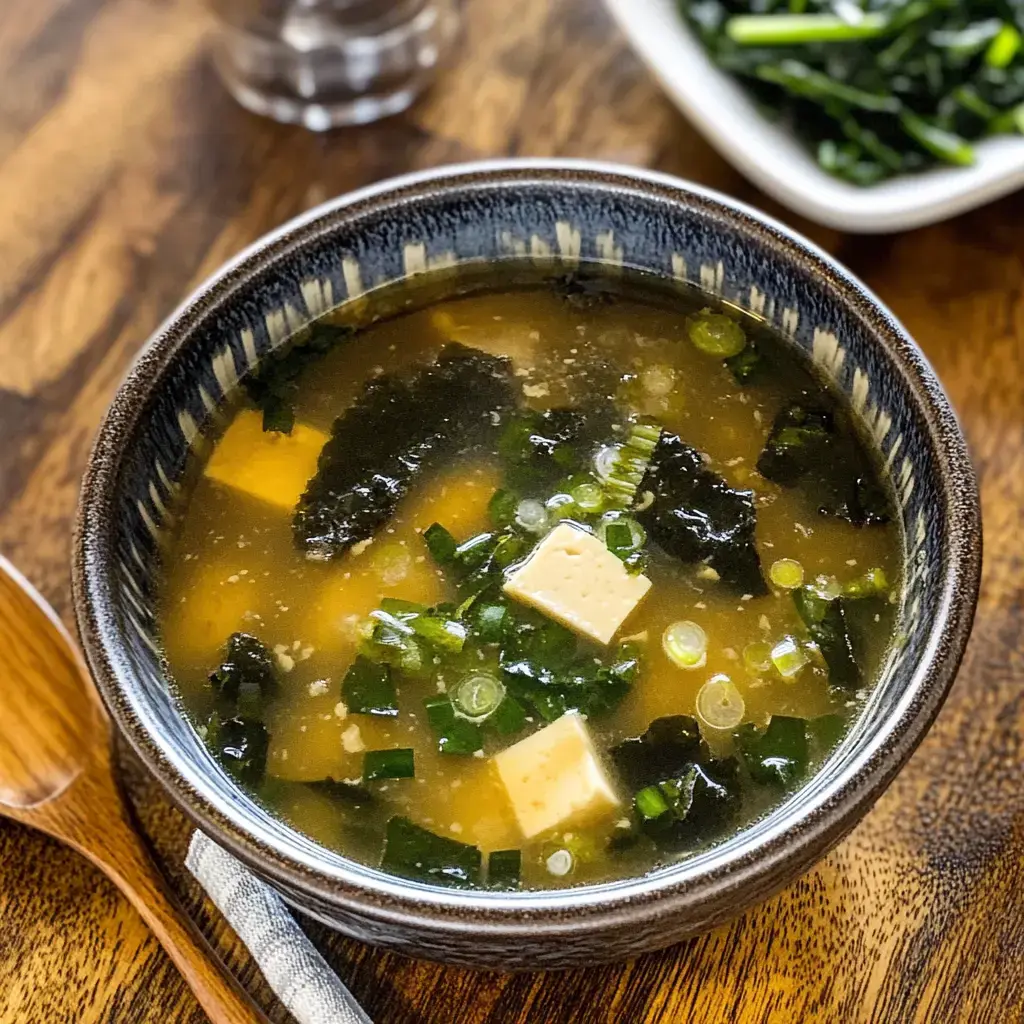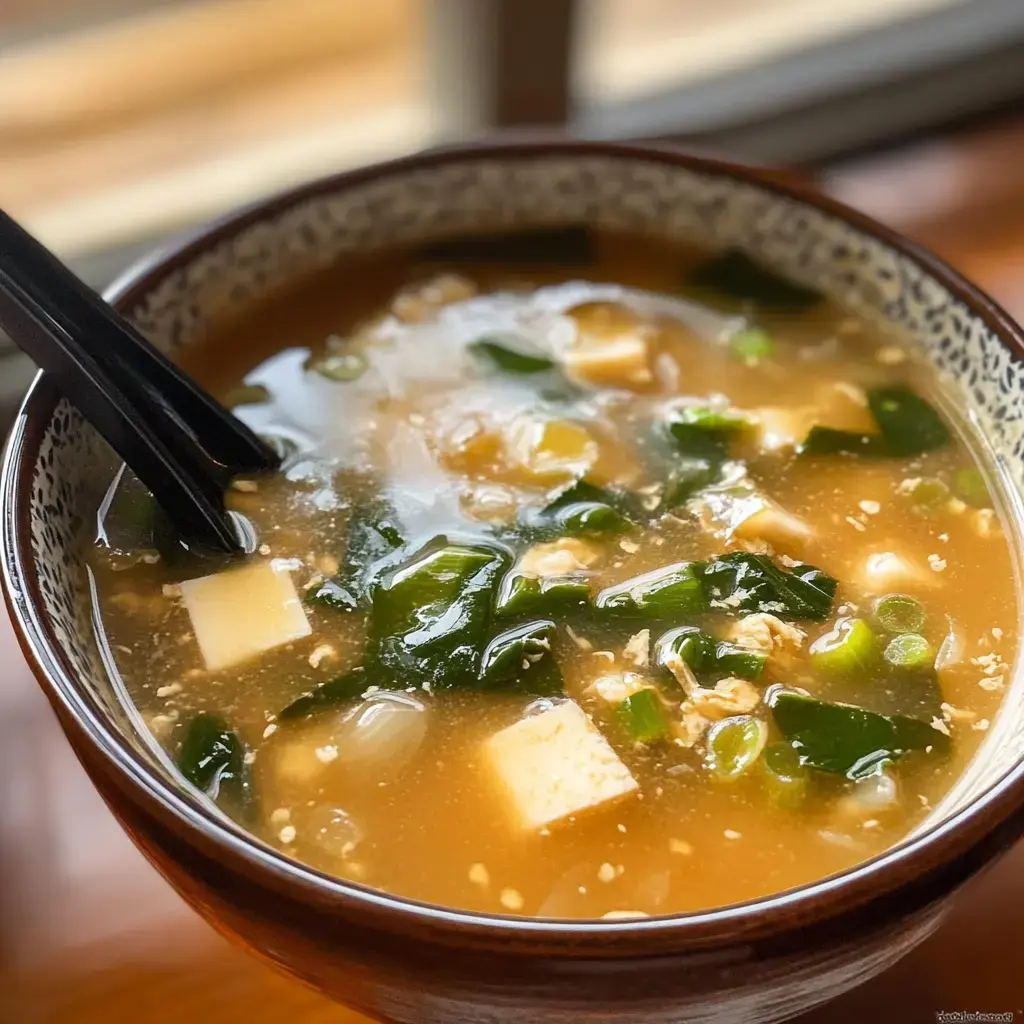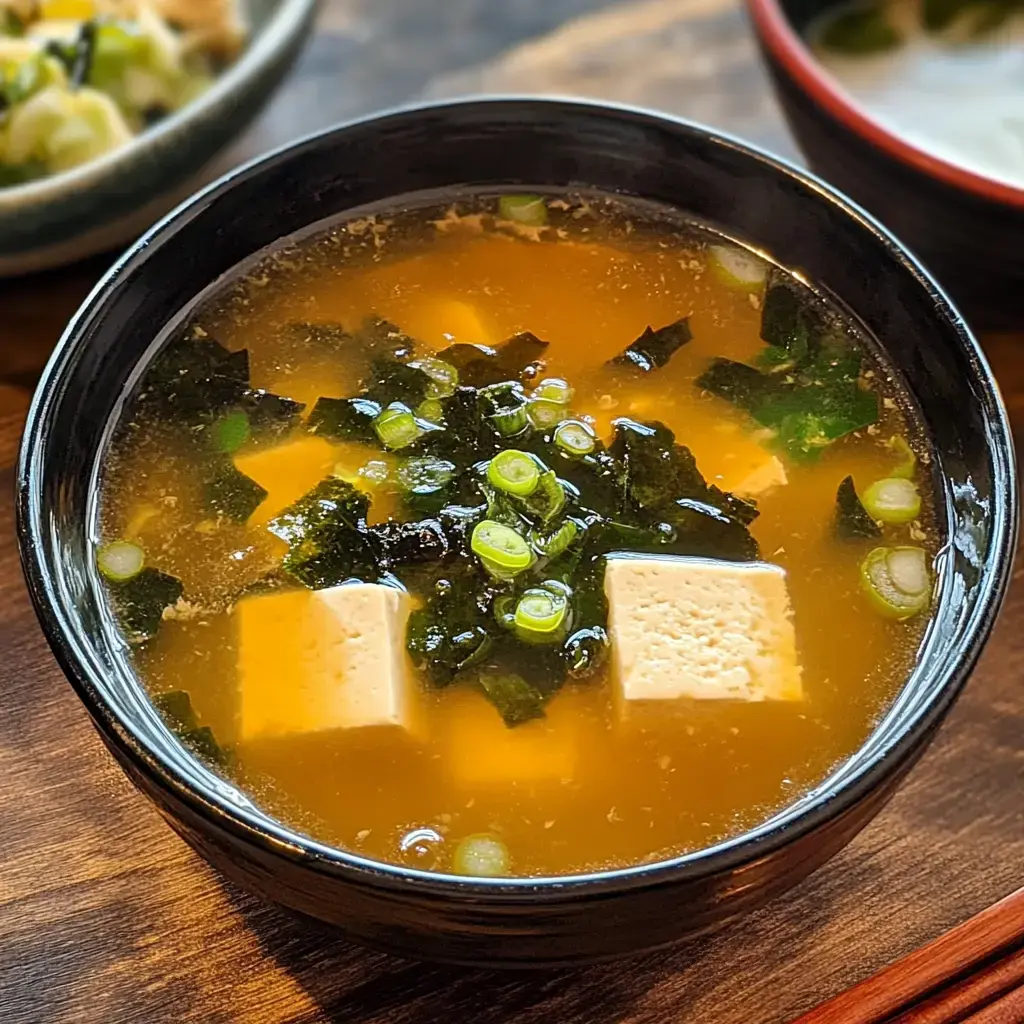 Pin it
Pin it
I've got to tell you about my go-to authentic miso soup that brings Japanese comfort food straight to your home! My Japanese neighbor taught me this gem and now I make it almost every day for breakfast. There's nothing like that first moment when you mix in the miso and your kitchen suddenly smells amazing with that rich umami scent – it takes me straight back to my Japan trips. The first time my family tried it, they were shocked that something this simple tasted so incredible!
What Makes This Soup Stand Out
This soup isn't your average recipe! When you create your own dashi from scratch, you get this amazing flavor depth that store-bought versions can't touch. Just last week I brought some to my sick friend and she swore it beat any restaurant version she's had. Even my picky kids who normally only want chicken noodle are always asking for this now!
Your Shopping List
- Dashi Basics:
- Kombu seaweed pieces
- Bonito (katsuobushi) flakes
- Clean water
- Soup Components:
- Premium miso paste
- Soft silken tofu diced
- Wakame seaweed (dried)
- Green onions, chopped
- Mesh strainer
Cooking Time
- Creating Your Dashi
- Start by putting the kombu in cold water and let it sit until you see tiny bubbles appearing around the edges. When you toss in the bonito flakes, you're adding that final magic touch!
- Crafting Your Bowl
- Heat your strained dashi gently, drop in your tofu chunks and watch the wakame expand like little sea blossoms. Remember - don't ever boil it or you'll lose all those subtle flavors.
- Working With Miso
- This is where kitchen smarts come in! Always mix your miso in a separate ladle before you stir it into the main pot. Every single serving needs to be just perfect!
 Pin it
Pin it
Expert Tricks
Wanna know my top tips? Always go for filtered water - it makes your dashi taste so much cleaner. Don't cut corners with kombu soaking time. And here's my best advice: store your miso paste in its own special container in the fridge to keep it fresh longer. Sometimes I'll blend white and red miso for a more interesting flavor profile!
Ready To Eat
I can't get enough of serving this in my authentic Japanese bowls with those tiny spoons that make the broth so fun to sip. For a morning meal, I'll add an egg with a runny yolk on the side. When I've got company over, I put out extra goodies like various mushrooms or different seaweeds so everyone can make their own custom bowl!
Storage Tips
Here's a handy trick - make a big batch of dashi and keep it in your fridge! That way you can whip up fresh miso soup whenever you want. Just remember two things: never let it boil when you warm it up, and always add your miso paste fresh each time. I prefer making just enough for one meal so every bowl turns out perfect.
Try New Combos
Go ahead and play around with it! I sometimes throw in some sliced shiitakes or baby spinach leaves. My vegetarian buddies love it with just veggies and kombu-only dashi. One time I added corn and chunks of potato and it turned into the ultimate comfort food! That's the fun part of cooking - finding your own personal favorite version.
 Pin it
Pin it
The Soul Behind The Soup
This soup has become our family's morning tradition! There's something so grounding about kicking off your day with this nurturing bowl. My children are discovering different food cultures and learning to appreciate taking time with meals.
The greatest joy isn't just how tasty it is but seeing everyone's amazement when they find out how basic yet fulfilling real miso soup can be! Whether you want it for breakfast comfort or just need something warm and soothing, it always delivers. And watching people fall in love with traditional Japanese cooking? That's what makes sharing food so worthwhile!
Frequently Asked Questions
- → What’s dashi and what does it do?
Dashi is a base stock in Japanese cooking, made from kelp (kombu) and dried fish flakes (katsuobushi). It adds that deep, savory 'umami' taste in miso soup and other dishes.
- → How do I make it vegetarian?
To make it vegetarian, swap bonito flakes for shiitake mushrooms and just use kombu. You'll still get that rich umami flavor you need.
- → Why avoid boiling miso paste?
Boiling it wipes out those good probiotics and tempers the delicate flavors. Stir in miso after removing from heat and reheat gently later if needed.
- → How do I store the soup?
Eat fresh for the best taste. If needed, refrigerate without the miso for up to two days. Mix miso in when reheating.
- → What’s the best tofu for this dish?
Use soft or silky tofu (kinugoshi). Its smooth texture fits beautifully in the soup.
Conclusion
A comforting Japanese classic, this miso soup blends umami-packed dashi stock with soft tofu cubes and wakame seaweed. It’s light, nourishing, and full of traditional flavors you’ll love.
